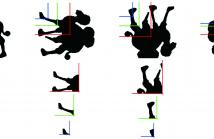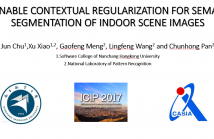- Read more about CGAN-Plankton: Towards Large-scale Imbalanced Class Generation and Fine-Grained Classification
- Log in to post comments
- Categories:
 46 Views
46 Views- Read more about Context-aware cascade network for semantic labeling in VHR image
- Log in to post comments
Semantic labeling for the very high resolution (VHR) image of urban areas is challenging, because of many complex man-made objects with different materials and fine-structured ob-jects located together. Under the framework of convolutional neural networks (CNNs), this paper proposes a novel end-to-end network for semantic labeling.
- Categories:
 124 Views
124 Views- Read more about A New Fusion Method For Remote Sensing Images Based On Salient Region Extraction
- Log in to post comments
- Categories:
 6 Views
6 Views- Read more about ACCURATE MESH-BASED ALIGNMENT FOR GROUND AND AERIAL MULTI-VIEW STEREO MODELS
- Log in to post comments
We propose a method for accurate alignment of ground and aerial multi-view stereo (MVS) models. We achieve this goal by reconstructing the surface meshes from MVS point clouds generated by aerial and ground images respectively, and then iteratively removing the gap between them. The key issue is how to establish reliable correspondences between two meshes.
- Categories:
 18 Views
18 ViewsIn this paper, we propose an infinite impulse response (IIR)
filtering with complex coefficients for Euclid distance based
filtering, e.g. bilateral filtering. Recursive filtering of edgepreserving
filtering is the most efficient filtering. Recursive
bilateral filtering and domain transform filtering belong to
this type. These filters measure the difference between pixel
intensities by geodesic distance. Also, these filters do not
have separability. The aspects make the filter sensitive to
- Categories:
 7 Views
7 Views
- Read more about Trademark Image Retrieval Using Hierarchical Region Feature Description
- Log in to post comments
A novel trademark image retrieval(TIR) method is proposed in this work. The proposed approach commences with region partitioning through rotationally capturing multi-level regions of an image in a hierarchical manner, and then an effective region measurement is used as shape description of the regions generated from region partitioning stage. A shifting feature matching strategy is used to evaluate the similarity between the query and database images. The experimental results on the standard shape databases demonstrate its superiority performance over the state-of-the-art approaches.
- Categories:
 20 Views
20 Views- Categories:
 6 Views
6 Views
- Read more about LEARNABLE CONTEXTUAL REGULARIZATION FOR SEMANTIC SEGMENTATION OF INDOOR SCENE IMAGES
- Log in to post comments
Semantic segmentation of indoor scene images has a wide range of
applications. However, due to a large number of classes and uneven
distribution in indoor scenes, mislabels are often made when facing
small objects or boundary regions. Technically, contextual infor-
mation may benefit for segmentation results, but has not yet been
exploited sufficiently. In this paper, we propose a learnable contex-
tual regularization model for enhancing the semantic segmentation
results of color indoor scene images. This regularization model is
- Categories:
 10 Views
10 Views